Adelphoi Zangaki
Adelphoi Zangaki (Brothers Zangaki) were two brothers of Greek origin, who were active as photographers in Egypt and Algeria, from the 1860s through to the 1890s and who specialized in photographing ancient monuments and scenes of everyday life, producing prints for the tourist trade.[1][2] They occasionally worked with the Port Said photographer, Hippolyte Arnoux on the project document works on the Suez Canal. They were amongst the first commercial photographers to produce large scale images of Egypt.
Adelphoi Zangaki (Zangaki Brothers) | |
|---|---|
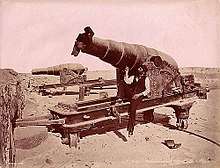 One of the Zangaki brothers sitting on the cannon and pointing to the initials G.Z. carved on its barrel, mostly likely George, 1870s | |
| Born | (Probably) George and Constantinos Zangakis Dates unknown |
| Died | Unknown |
| Nationality | Greek |
| Known for | Photographers |
| Movement | Orientalist |
Life and career
Little is known about the Zangaki brothers, except their initials, C. and G., and that they worked out of Port Said and Cairo from around the 1860s through to at least the 1890s.[3] Many of the Zangaki photographs are signed with a brother's initial and/or a place of business, e.g., "C. Zangaki" or "Zangaki, Cairo" or occasionally "A.Zangaki".[4]
Until relatively recently it was believed that "A.Zangaki" was a single photographer. However, with the discovery of a signboard with the name "Adelphoi Zangaki", it was recognised that these were brothers. Ibn al Haithan Many scholars also believe that their names were George and Constantinos (or Costas).[5] Some scholars believe that they were born on the island of Milos, while others have suggested that they were Cypriot. However, no definitive evidence pertaining to their place and date of birth is extant. How they came to learn photography is also unclear. However, shortly after their arrival in Egypt they had become established photographers with a studios in Cairo and Port Said.
By the 1850s, tourist travel to Egypt created strong demand for photographs as souvenirs. A small group of early photographers, mostly of French origin, made their way to Cairo and the Nile Valley to capitalise on this demand. These pioneering photographers included Félix Bonfils (1831-1885); Gustave Le Gray (1820-1884), Emile Béchard (his brother Henri signed some of his photographs; active 1860-1890); the British-Italian brothers Antonio Beato (c. 1832–1906) and Felice Beato (1832-1909) and Hippolyte Arnoux (active between 1860 and 1890).[6]
Photographs taken by the Zangaki brothers are commonly found in tourists' albums assembled in the Middle East in the second half of the 19th-century. From their Port Said studio, they were ideally situated to sell to Europeans visiting Egypt as part of a Grand Tour.[7] The Zangaki brothers traveled along the Nile accompanied by a horse-drawn darkroom wagon to document the Egyptian scenery, architecture and events. Images included views of the pyramids, e.g., Cheops or the Sphinx and the cities, e.g., Suez or Alexandria, as well of Egyptians going about their daily lives, e.g., a teacher and pupils, men by the Nile, or women at home.[9]
They may have worked with a French photographer, Hippolyte Arnoux, in the project to document works on the construction of the Suez Canal. Most scholars believe that Arnoux was the official Suez photographer and that the Zangaki Bros may have assisted him, however, the precise nature of their relationship is unclear since Arnoux's biography is just as enigmatic as the Zangaki brothers.[10] However, this relationship soured when in 1874, Arnoux instigated litigation against the Zangaki Brothers and one Spiridion Antippa accusing them of usurping his intellectual property. Arnoux was successful and on 29 June 1876, the Court of Ismailia, recognized them as "guilty of usurpation of artistic and industrial property and unfair competition." [11]
Recognition
It is acknowledged that the Zangaki brothers "produced some of the finest images of late Victorian Egypt." Their photographs of late 19th century Egypt, though produced for sale to the flourishing European tourist trade to Egypt, are highly prized by historians and collectors for their insights into life at the time.[12]
Gallery
- Works by Zangaki Brothers

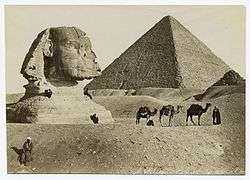
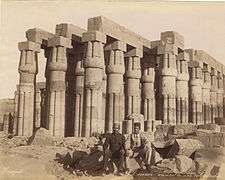
.jpg)
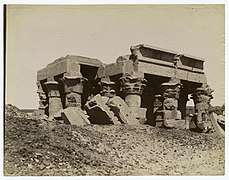
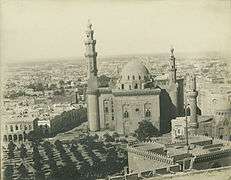

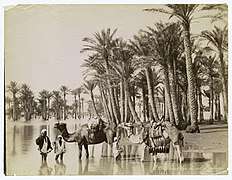

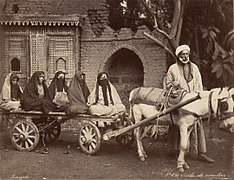
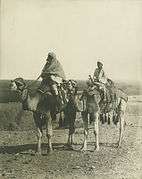
See also
- History of Photography
- List of Orientalist artists
- Orientalism
References
- C. & G. Zangaki Photographs Collection, 1870-1875, Princeton University Library Finding Aids. Note: The Zangaki Collection Finding Aid at Princeton University lists them as functioning from 1870 to 1875
- RCS Index to Photographers Archived 2012-03-05 at the Wayback Machine, Cambridge University Library. Note: The Royal Commonwealth Society Photographers Index database at Cambridge University lists them as in the 1880s and 1890s.
- Zangaki Brothers, Luminous-Lint
- Perez, N., Focus East: Early Photography in the Near East (1839-1885), Abrams, 1988, p. 233
- Irini Apostolou, "Photographes Français et Locaux en Orient Méditerranéen au XXIX siècle: Quelques cas de collaboration," Bulletin du Centre de Recherche Français à Jérusalem, Vol. 24, 2013 (translated from French)
- Jacobson, K., Odalisques and Arabesques: Orientalist Photography, 1839-1925, London, Bernard Quaritch, 2007, p. 277.
- Jacobson, K., Odalisques and Arabesques: Orientalist Photography, 1839-1925, Bernard Quaritch, London, 2007, p. 277
- Claudia Cavatorta. I fratelli Zangaki a Port Said, AFT Rivista di Storia e Fotografia, Vol. 44, 2006.
- Hannavy, J. (ed.), Encyclopedia of Nineteenth-Century Photography, Routledge, p. 1521.
- Irini Apostolou, "Photographes Français et Locaux en Orient Méditerranéen au XXIX Siècle: Quelques cas de collaboration," Bulletin du Centre de Recherche Français à Jérusalem, Vol. 24, 2013
- Perez, Nissan N. Focus East: Early photography in the Near East (1839-1885). New York: Harry N. Abrams, 1988, p. 233.
External links
| Wikimedia Commons has media related to Zangaki Brothers. |
- Royal Commonwealth Society Photographers Index: Zangaki, accessed 5 January 2011.
- Vintage Photography The Zangaki Brothers: Zangaki Brothers in Egypt, accessed 5 January 2011.
- Adelphoi Zangaki Studio, Portland Art Museum’s Online Collections